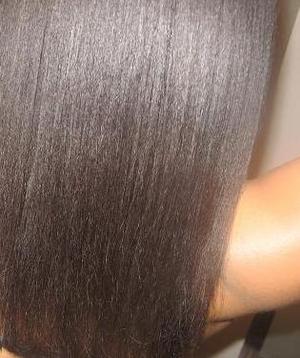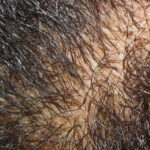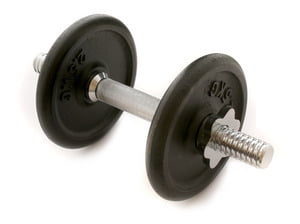Thinning Ends?
Do your ponytails look limp and lifeless? Can you see more and more of the back of your shirt through your hair? If these statements describe your hair in any way, you must take action to prevent the further loss of length and volume to the ends of your hair. But, before you start trimming and treating your thinning ends, you should pinpoint the exact cause of your hair thinning. This is very important! It will help you prevent running into the same problems again months down the line.
Other than hormonal, genetic, menopausal, or medically generated causes of hair thinning, the main contributors to thinning hair and ends are chemical and physical sources of damage. However, it should be mentioned that there are some “thinning” hair episodes that occur on otherwise healthy, well cared for heads of hair!
When thinning hair near the ends is normal:
Very Long Hair
For one, a slight thinning of the hair’s ends occurs during the normal, healthy progression of hair growth. Hair thins out towards the tips due to the gradual “weathering” that a head of hair faces throughout its lifetime. The hair nearest the ends is the oldest hair on the head, and the longer the hair is, the older it is! The truest results of hair thinning due to weathering can be seen on hair lengths beyond the horizontal bra strap line. The ends of this hair are usually older than three years. Hair will naturally thin out near the very ends as it quickly ages over the months, and will thin out everywhere else as you and your entire body age over the years.
Chemically relaxed and/or Air dried hair
For women who chemically relax and/or air dry their hair, there is also a time where the ends of the hair will appear thinner than normal. In women who relax their hair, this usually occurs several weeks into a relaxer cycle that is allowed to extend out for several months. The same tends to occur for women who prefer to air dry the hair rather than heat dry it.
What happens in kinky hair is that the roots have more “volume” near the scalp than the ends. Imagine several weeks of tight curls aligned together versus stick straight ends aligned together. Basically:
~~~~~~ ———–
~~~~~~ ———–
~~~~~~ ———–
~~~~~~ ———–
When you put the strands of hair together, the ends will always appear to be thinner in comparison to the new growth. Do not trim your hair based on this scenario alone. You cannot make a final determination about the health, or attractiveness, of your hair’s hemline until you: 1.) relax and/or 2.) straighten your hair out with heat.
Thinning hair ends can be (and are most often) caused by many factors:
Chemical Damage Considerations
Relaxer Induced Thinning
Over Processing from Relaxers and their “Chemical Run”
When relaxers are rinsed out of the hair, the active creme passes over previously relaxed ends and starts to work on them in a process I like to call “chemical run.” This type of damage to the ends happens as a result of not protecting the ends during the relaxing process. Depending on how often you are relaxing (lets say every 8 weeks), this happens to your ends every 8 weeks. Each time this process occurs, the cuticle becomes more and more degraded resulting in thinner (and in some people, redder) looking ends. The best way to guard against this type of thinning is to coat the ends in an oil or conditioner prior to relaxing. When you rinse your relaxer, your ends will be shielded against further chemical exposure.
Improper Neutralizing of Relaxer
Improper neutralizing after the relaxer can lead to thinner hair over time. The relaxer chemicals continue to process the hair strand long after the relaxer is rinsed away, resulting in thinner, moisture and protein deficient hair strands. This improper neutralization is often responsible for breakage and thinning that occur exclusively in the nape area. Breakage and thinning at the nape is usually the result of improper rinsing of the back of the hair. Leaning your head against the rim of the shampoo bowl as the relaxer is rinsed gives this area of your head more processing time which typically leads to over processing. Always make sure that your head is lifted fully and allowed to be properly rinsed and neutralized along the back hair line.
Mechanical Damage Considerations
Heat Use
Heat is one of the main culprits of self induced hair thinning. Heat throws off the moisture balance within the hair strand. This lack of internal moisture causes breakage (especially near the ends) and results in a thinner look to the hair there. Heat also denatures the hair’s internal protein structure and damages the cuticle layers of the hair, preventing proper moisture absorption and retention. This condition almost always leads to hair breakage near the ends of the hair. Thin hair is almost always moisture deficient.
You and The Elements
Allowing the ends to freely rub the backs of clothing and to be exposed to the elements is another cause of thinning ends. If your hair is catching and rubbing against the backs of fabrics like cotton and wool that are natural moisture absorbers, this could contribute to your thinner ends. Your cuticle becomes roughed up from the trauma of rubbing and begins to break down. Also exposing your hair to the elements– bitter cold, wind, and sun can also degrade the cuticle and damage the precious ends.
Combing/Styling
You should also get into the habit of controlling your comb as it makes its way down the hair shaft. This is critical for reducing breakage during detangling and styling. You should always “brace” your hair with one hand as you attempt to detangle it with your comb in the other hand. Especially near the ends. Gently grasp your hair several inches up from the tips and gently detangle your hair from your hand down. Move your bracing hand up about an inch or two higher on the section of hair, and repeat the detangling procedure. As you work back down during detangling, move your bracing hand down as well. I suggest “bracing” your hair every 3-4 inches. Avoid combing your hair from root to tips without “bracing” the hair along the way.
Using your hand to offer support along the shaft as you make your way through avoids unneeded tension on any one area, and reduces mechanical breakage that might lead to hair thinning over time.
Insufficient moisturizing techniques
Your ends require special moisturizing attention. Deep conditioning is a must for protecting against thinning hair ends. Do not skimp on weekly moisturizing conditioning treatments. When you go to apply your daily moisturizer, apply the hair moisturizer to your ends first, then apply to the rest of your hair. The ends are the oldest part and if your hair is at least shoulder length, your ends are about two years old already!
With age, your hair is less able to retain moisture, so you really have to be diligent about keeping the ends moist and protected. Once you have moistened the ends with moisturizer, apply a light coating of oil to seal your moisturizer inside the hair strand. This will keep your hair moisturized for greater lengths of time. Never allow your hair to dry out. As soon as it dries out, elasticity decreases dramatically and breakage begins to set in.
Solutions and Prevention
Low Heat Regimen
My remedy for thickening ends is going on a very low heat regimen, no direct heat more than twice per month. You really want to focus on the last two to three inches of hair and keeping them moisturized and protected at all times.
Protective Styling
Keep your hair in styles that protect your ends from the elements.
Remove the damage
If your ends are indeed damaged, it is best to remove them. You may opt to clip them all in one sitting, or gradually over the course of time to preserve your current length. Hanging on to thin ends can really do you much more harm than good. If you let your hair’s hemline get too bad it may hurt you when you detangle, and you may end up losing hair to breakage that way. Combing through blunt, even hair is easy because the hair does not catch on itself or in other hairs. Each hair moves freely.
However, uneven ends, even healthy ones, can affect the rest of your hair mainly through tangling and extra stress on the longest strands. Think about a stretch of hair that contains strands of varying lengths (A). How do you think that would compare to a stretch of hair with a more uniform length (B)?
This: (A)
~~~~~~~~~~~~~~~~~~~~~~~~~~~~~~~~~~~
~~~~~~~~~~~~~~~~~~~~~~~
~~~~~~~~~~~~~~~~~~~~~~~~~~~~
~~~~~~~~~~~~~~~~~~~
~~~~~~~~~~~~~~~~~~~~~~~~~~~~
or this, (B)
~~~~~~~~~~~~~~~~~~~~~~~~~~~~~~~~~~
~~~~~~~~~~~~~~~~~~~~~~~~~~~~~~~~~~
~~~~~~~~~~~~~~~~~~~~~~~~~~~~~~~~~~~
~~~~~~~~~~~~~~~~~~~~~~~~~~~~~~~~~~
~~~~~~~~~~~~~~~~~~~~~~~~~~~~~~~~~~
The first scenario is more of an “every man for himself” type of deal. Each hair on the end takes the full brunt of the trauma/manipulation. So, while those thin ends might not be damaged one bit, they are more fragile/weaker overall because they are out there fending for themselves against whatever you throw at them. Imagine sliding a flatiron down that first piece! The longest strands are going to take the biggest hit.
The one with a uniform length resists mechanical breakage easier because as the comb travels toward the ends, the hair maintains its “strength in numbers” and the force of manipulation is shared. Tangling is greatly reduced in this situation.





